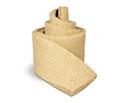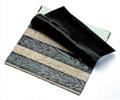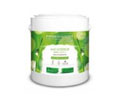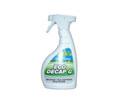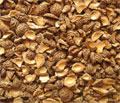

Date of publication :
February 2014
Updated April 2016
Looking for a bio-based custom-made solution and would be accompanied to take up a collaborative project?
Contact IAR cluster
In the framework of a sustainable development, bio-based products are on the rise! In 2010 the European market volume for bio-based products represented € 28 billion, this amount would reach € 57 billion in 2020 (source: European Commision, 2013).
A product is qualified as bio-based when its origin - partial or total - is vegetable (eg crops, wood, algae) or animal (eg fats). Distinguished by their origin, these products now cover a wide range of applications.
This report, focused on products of plant origin, shows examples of applications suitable for the building sector.

New construction systems integrate plant-based raw materials
|
The system NOVHISOL is a constructive frame of reinforced concrete and prefabricated multilayered walls of which one component is a plant fibers-based concrete replacing traditional masonry system (bricks, blocks). |
Bioproducts for insulation and sealing
|
Feutralin is an 100% natural acoustic insulating underlay for laminate floors. |
|
|
Technilaine is a hemp-based insulator composed of 85% hemp fiber hemp (grown and processed in France) and 15% polyester stable fiber. |
New synthetic insulating materials made from bio-based chemical intermediates will be the products of tomorrow.
|
EcoRenfort is a range of reinforcements for PVC joinery, made in a composite material based on natural fibers. |
|
|
Mammouth ® Neo is the first bituminous membrane based on thermoplastic polyurethane (TPU). |
Bio-based coatings
|
Natura matt for walls and ceilings whithout dryers is a water based natural top coat paint made from 100% vegetal binder for walls and ceilings of "dry" rooms. |
|
|
StarFlax© Wall is a wallcovering based on non-woven linen, intended to be implemented in domestic and professional environments. |
|
|
ECO DECAP G is specially formulated for stripping substrates coated with paint, glue, or varnish. |
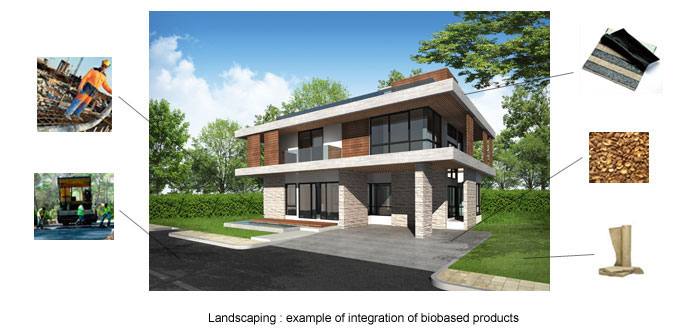
The landscaping in bio-based version
|
FibriMat Mulch mat is our range of 100% biodegradable plant and tree mats made of natural fibres, for green spaces. |
|
|
Biogranulats® replaces any gravels of mineral origin for the gritting of outside spaces within the framework of environment-friendly landscaping. |
|
|
Wood-plastic composites (produced from materials such as compound REFINE® VH5793 composed of virgin PVC and 50% wood flour) are available today for decking. |
Bio-based additives for implementation
|
The shuttering removal emulsion AQUAMEXOIL is the « green » alternative to solvent-based mineral or plant oils for concrete construction. |
|
|
CecabaseRT® is a surfactant additive comprising at least 50% renewable raw materials which, blended with the bitumen, helps lower by some 40°C the application temperature of the road surfacing material without impairing its performance. |
Bio-based and product origin
A bio-based product does not mean it is 100% derived from biomass. It is common to have various origins in a product (fossil, mineral, plant or animal) to take advantage of each constituent.
The choice of material is indeed based on three main motivations for industrials:
- Optimize costs and vary its supply to always be competitive if market fluctuations,
- Get new features and properties,
- Reduce environmental footprint.
Incorporation rate
The rate of incorporation of bio-based materials depends on the family of products and existing technologies. Certain classes of products are actually more advanced in terms of incorporation of bio-based materials. For this reason it is important to integrate this parameter in the analysis of bio-based content.
How bio-based content is measured?
Today there is no legal framework to define accurately a bio-based product, whether in terms of definition or in terms of bio-based content measurement.
One of the most widely used methods is based on the calculation by percentage weight (or volume) of the various components of a product to assess its bio-based content.
To communicate with their customers, manufacturers also use independent analyzes (via a third party), on the content of bio-based carbon and the content of other elements from biomass (oxygen, nitrogen, ...) of their products.
Normative framework
At European level, several standards, technical specifications and reports have recently been published on bio-based products. These documents cover the vocabulary (EN 16575: 2014), the life-cycle assessment (EN 16760: 2015), the bio-based content (EN 16785-1: 2015), the sustainability criteria (EN 16751: 2016), the bio-based carbon content (CEN / TS 16640: 2014), the methods for determining the bio-based content (CEN / TR 16721: 2014), and the requirements and methods related to bio-based solvents (CEN / TS 16766: 2015).
All these documents were made in the framework of the technical commitee CEN/TC 411 Bio-based products.
French Label "Bio-based Building"
This label came into force in December 2012 to promote the integration of bio-based materials in new construction. The decree of December 19, 2012 (and corrigendum of December 23, 2012) specifies the conditions for awarding the label and includes three levels depending on the mass of bio-based material per square meter.
Each level of the label requires a minimum of incorporation rate of bio-based material. It depends on the main use for which the building is intended (house, industry, storage, transportation service, other uses, etc.). This rate is expressed in kilograms per square meter of floor area.
Not to be confused
It is important to note that the origin of a product does not predict anything in its environmental impact: renewability, toxicity, end of life, greenhouse gas emissions, energy consumption during the manufacturing etc..
The life cycle analysis here is a tool for industry to assess the potential environmental impacts and to judge at best the product, from its design to its end of life.
It is also important to distinguish the manufacturing process and the origin. For example, a product cannot be considered as bio-based if it is obtained by fermentation of a fossil substrate by a microorganism.
Written by J. BAUSSET & A.-S. HERVIEUX, IAR cluster
Reference: Bio-economy and sustainability: a potential contribution to the Bio-economy Observatory, page 39, European Commission, 2013
Photos/graphics credits: Maxim_Kazmin - Fotolia (report's logo), Franck Boston - ShutterStock & Alesandro14 - ShutterStock (picture 1-section of a house), NovHisol (2), EcoTechnilin (3 & 11), Technichanvre (4), Innobat (5), Soprema (6), Derivery SAS (7), Dock21 (8), EnviroPlus (9), Alesandro14 - ShutterStock (10-landscaping), PhytoValor (12), AFT Plasturgie (13), Mexel (14), Arkema (15)



